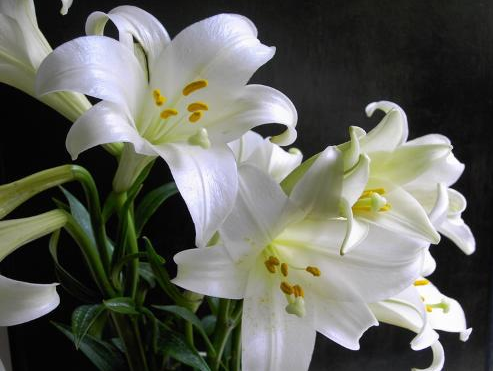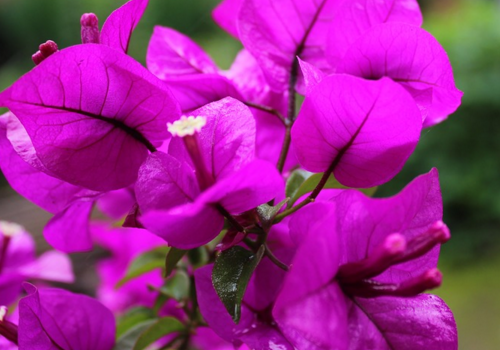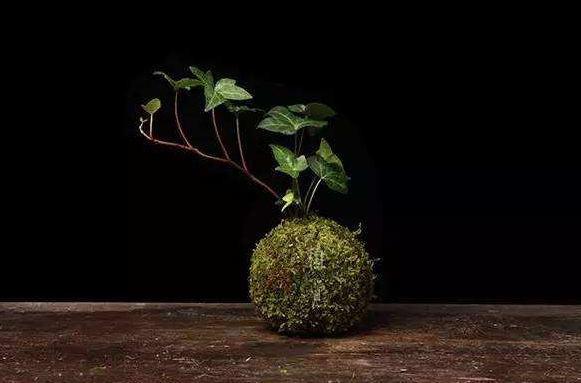How to grow lilies? Is it poisonous to put it indoors?
Lily language refers to lily has a good family, great love meaning, there is a deep blessing meaning, lily with its quiet restrained characteristics deeply loved by people, then how to raise lily? Is it poisonous indoors?

I. Breeding environment
1. soil
Lily roots are more developed, in order to avoid affecting the root absorption of nutrients, in the selection of pots to try to be larger, not too shallow. Nutrient soil can be purchased directly from the market, or mixed with garden soil, sandy soil, moldy soil, etc., and then added to the base fertilizer to make nutrient soil. Change the pot every other year and supplement fertilizer. The soil should be slightly acidic, especially to avoid calcareous soil.
2. moisture
It is best to keep the humidity at about 80%, not to fluctuate too much. Do not water too much, keep the pot soil moist, summer rain more, pay attention not to ponding, avoid rotten roots.
3. temperature
Normal room temperature can grow normally, temperature control in 16 to 23 degrees, winter temperature is too low, to move into indoor maintenance, not lower than 5 degrees, summer maximum temperature can not be higher than 30 degrees, pay attention to ventilation, temperature too high and too low will make it stop growing, 10 degrees above growth will resume.
4. illumination
Lily likes sunny environment, long shade will lead to poor flower bud differentiation, affect flowering, slow growth. Provide sufficient light for it every day. The sunlight at noon in midsummer is too strong, so shade it to avoid burns caused by sunlight refraction.
5. fertilization
Lily fertilizer does not need to be too large, two weeks to 20 days or so can apply a thin fertilizer, flowering on the nutrient consumption is relatively large, need topdressing, for flowering to provide enough nutrients. Fertilizers containing nitrogen and potassium can be selected.
II. Breeding methods
1. Sowing and reproduction: collect seeds and store them well. sow them in spring next year. they will germinate about 20-30 days after sowing. shade them during seedling period. plant them separately in autumn.
2. Cuttage propagation: After digging out the bulbs, the scales will be broken off, and after drying, it will be cut in the prepared soil, poured with a certain amount of water, about 1 month and a half time will take root.
III. Common diseases
1. Spot disease: there will be brown spots on the leaves, but also make the whole leaves black and dead, found immediately after the disease leaves removed, with zinc wettable powder spraying.
2. Bulb rot disease: brown spots appear in its bulb parts, serious when it will become rotten, after the disease can be sprayed with zinc.
4. Is Lily poisonous indoors
Lily is not poisonous. However, this does not mean that it is suitable for indoor use.
2. Lily will emit a special substance, similar to the effect of stimulants. Although the amount is relatively small, if it accumulates for a long time and the ventilation state is not good, it is easy to make people's nerves become excited. This state has its pros and cons. If it is in a working state, then this state is naturally more favorable. However, if you want to rest, or have obvious insomnia symptoms, then there is no benefit. Moreover, it can also cause people to have symptoms of "drunken flowers", which is not good for human health.
Moreover, relatively speaking, its floral fragrance is relatively rich. If it is placed indoors, it is likely to make people feel uncomfortable for a long time. If it is serious, it may also produce nausea, agitation and other phenomena.
In addition, its pollen grains are relatively large, and relatively large, if placed indoors, adverse to human health. Especially for people with pollen allergies.
V. Precautions
1. If you want to keep it indoors, you can't put it in the bedroom, it may make people insomnia and reduce sleep quality. Don't put it on the table, it also affects appetite.
2. Remember to ventilate regularly and often disperse the smell of flowers.
Time: 2019-04-05 Click:
- Prev

Where is the main producing area of triangular plum? What are the breeding methods and matters needing attention?
Triangular plum is also known as triangular flower, leaf flower, bougainvillea, and scarf. Like high temperature and humid environment, like strong light. So, where is the main producing area of triangular plum? What are the breeding methods and matters needing attention of triangular plum? Where is the main producing area of triangular plum? Triangular plum is native to South America in the 1950s
- Next

Production methods and maintenance techniques of moss jade bonsai
Moss jade, which is not only a plant, but also a planting method, began in the Edo period in Japan, is one of the Japanese bonsai, has a long history. The characteristic of moss jade bonsai is that no hard material is used to carve the shape, but only the root of the plant is covered with soil to form a circle, and then covered with moss.
Related
- Fuxing push coffee new agricultural production and marketing class: lack of small-scale processing plants
- Jujube rice field leisure farm deep ploughing Yilan for five years to create a space for organic food and play
- Nongyu Farm-A trial of organic papaya for brave women with advanced technology
- Four points for attention in the prevention and control of diseases and insect pests of edible fungi
- How to add nutrient solution to Edible Fungi
- Is there any good way to control edible fungus mites?
- Open Inoculation Technology of Edible Fungi
- Is there any clever way to use fertilizer for edible fungus in winter?
- What agents are used to kill the pathogens of edible fungi in the mushroom shed?
- Rapid drying of Edible Fungi

